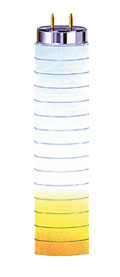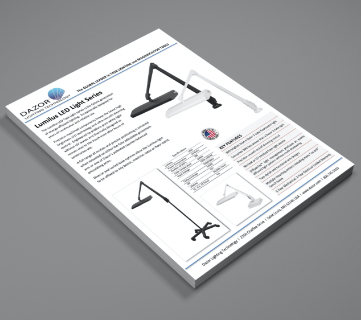The Importance of Color Temperature in Light Sources
Color temperature is a description of the warmth or coolness of a light source. When a piece of metal is heated, the color of light it emits will change. This color begins as red in appearance and graduates to orange, yellow, white, and then blue-white to deeper colors of blue. The temperature of this metal is a physical measure in degrees Kelvin or absolute temperature. While lamps other than incandescent do not exactly mimic the output of this piece of metal, we utilize the correlated color temperature (or Kelvins) to describe the appearance of that light source as it relates to the appearance of the piece of metal (specifically a black body radiator). Hence, a "warmer" light source will have a Iower correlated color temperature (such as a household incandescent lamp at 2900 Kelvins) than a "cooler" light source with a higher correlated color temperature (such as a clear mercury discharge lamp at 5900 Kelvins).
To further relate color temperature, consider the sun. The sun rises at approximately 1800 Kelvins and changes from red to orange to yellow to white as it climbs to over 5000 Kelvins at noon and then goes right back down the scale as it sets. Obviously, the sun is much hotter than those measures, and its physical temperature does not change. What does change is our perceived correlated color temperature of the sun.
While color temperature is useful for describing the warmth or coolness of a light source, it is not an exact measurement when it is describing discharge light sources because discharge light sources do not exactly follow the emission of light as our piece of metal. For a more in-depth look at the "color of light" that a discharge source is emitting, one must consider the relative spectral power distribution of that light source and the adaptation to that source of the observer.





